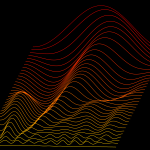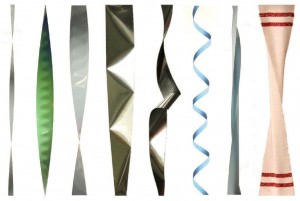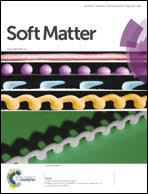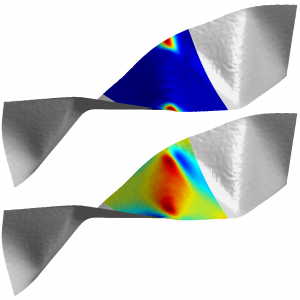 We investigate the wrinkling dynamics of an elastic filament immersed in a viscous fluid submitted to compression at a finite rate with experiments and by combining geometric nonlinearities, elasticity, and slender body theory. The drag induces a dynamic lateral reinforcement of the filament leading to growth of wrinkles that coarsen over time. We discover a new dynamical regime characterized by a timescale with a non-trivial dependence on the loading rate, where the growth of the instability is super-exponential and the wavenumber is an increasing function of the loading rate. We find that this timescale can be interpreted as the characteristic time over which the filament transitions from the extensible to the inextensible regime. In contrast with our analysis with moving boundary conditions,
We investigate the wrinkling dynamics of an elastic filament immersed in a viscous fluid submitted to compression at a finite rate with experiments and by combining geometric nonlinearities, elasticity, and slender body theory. The drag induces a dynamic lateral reinforcement of the filament leading to growth of wrinkles that coarsen over time. We discover a new dynamical regime characterized by a timescale with a non-trivial dependence on the loading rate, where the growth of the instability is super-exponential and the wavenumber is an increasing function of the loading rate. We find that this timescale can be interpreted as the characteristic time over which the filament transitions from the extensible to the inextensible regime. In contrast with our analysis with moving boundary conditions,
Biot’s analysis in the limit of infinitely fast loading leads to rate independent exponential growth and wavelength.
Reference :
Dynamic Wrinkling and Strengthening of a Filament in a Viscous Fluid, J. Chopin, M. Dasgupta and A. Kudrolli, Phys. Rev. Lett. 119, 088001 (2017)






 About me
About me